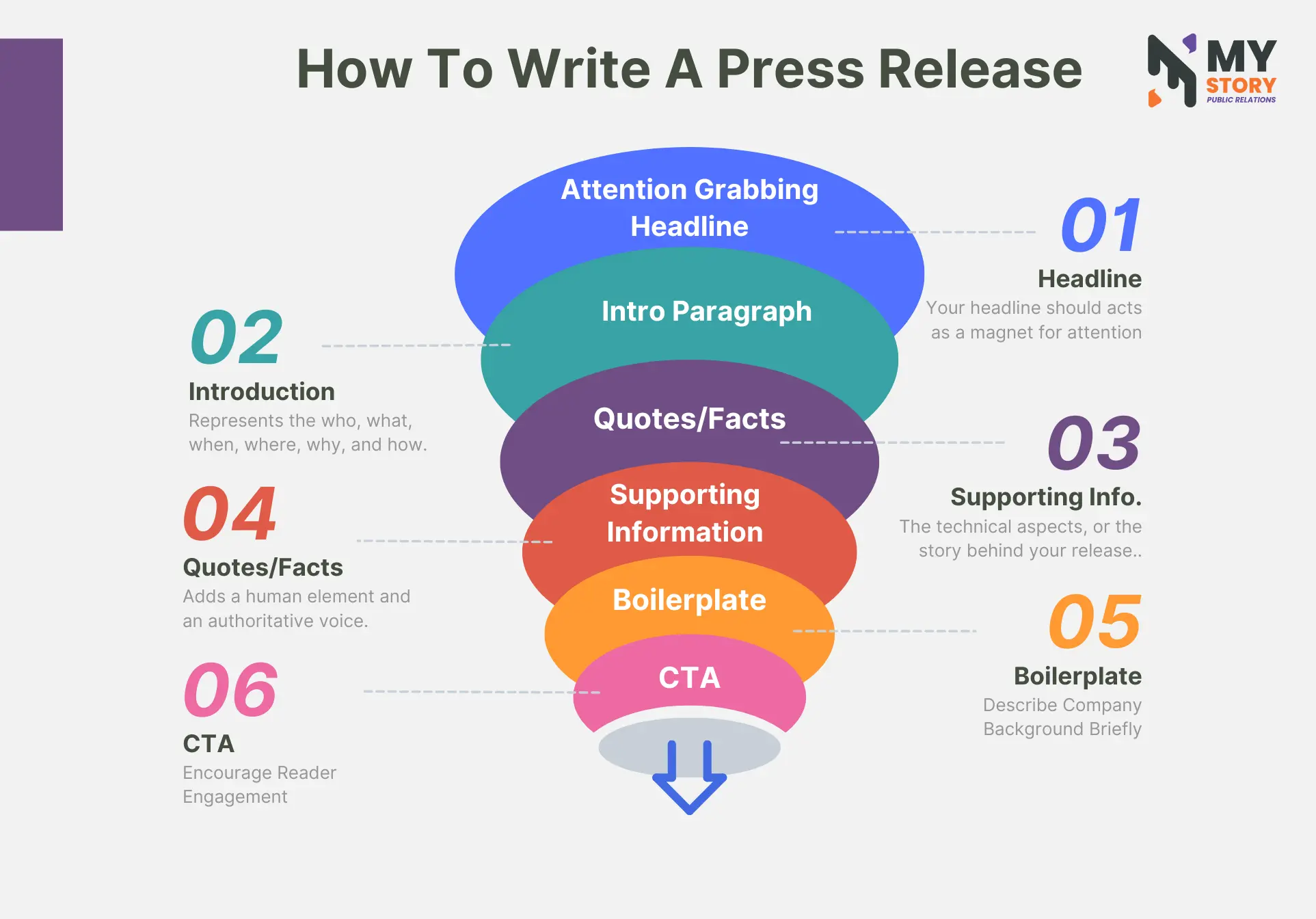Imagine this: You’re about to shatter the silence with a press release that changes everything. In less than a month, your business venture racks up over a million in sales. The digital world isn’t just watching; it’s buzzing with your brand’s name.
Now, take that vision further. By the second month, you’ve already surpassed your first-year revenue targets.
Inventory? Sold out. Demand? Through the roof. Your phone starts ringing off the hook with investment propositions from the who’s who of industry titans.
Could this be your reality? Absolutely.
This is what unfolds when your business announcement isn’t just words, but a declaration that commands attention and action.
You see, once in a blue moon, a unicorn e-commerce company like Casper comes along and redefines the playing field. They didn’t just sell a product; they sparked a public relations revolution. And at the core of it all was a strategic press release.
We’re here to guide you through crafting a press release that not only reaches journalists but compels them to share your story. This guide is steeped in SEO savvy, packed with punchy prose, and primed to position your news where it belongs—front and center.
Stay tuned as we divulge the secrets to crafting compelling press releases that cut through the noise and lay the foundation for your success.
Why do a press release
In a world where a tweet can start a movement, and a blog post can inspire an era, the question arises: why lean into press releases? The answer lies not just in the format, but in the unique intersection of tradition and innovation that press releases represent.
The Backbone of Brand Narratives:
Press releases are the hidden gears in the clockwork of media. They’re time-tested tools that announce your milestones with the clarity and authority that social media snippets often lack. Consider them your formal introduction at the grand ball of commerce and media.
SEO Advantage and Evergreen Presence:
A press release does more than travel through news cycles; it embeds your narrative in the bedrock of search engines. By incorporating SEO strategies and keywords like ‘innovative product launch’ or ‘breakthrough company announcement’, you ensure your story is not only seen but searchable and sustainable. It’s about crafting content that stands the test of time—evergreen and always accessible.
The Magnet for Media Attention:
Journalists are on the hunt—not for the next big thing, but the current big thing. Your press release, laden with keywords like ‘industry innovation’ or ‘cutting-edge business solutions’, can be the north star that guides them to your story. It’s the bat signal for reporters, bloggers, and industry commentators signaling that your news is worth the spotlight.
A Gateway to Targeted Audiences:
While social platforms scatter your message in the wind, press releases are like arrows shot directly into the heart of your target audience. They cut through the digital clutter with precision, reaching stakeholders, investors, and niche audiences who are actively searching for terms like ‘market-disrupting start-ups’ or ‘technology game-changers’.
Measuring Impact with Data-Driven Insights:
Beyond delivering your news, press releases provide a treasure trove of data. You can track how many times your release is viewed, shared, or leads to direct inquiries. This isn’t just about broadcasting; it’s about understanding the resonance of your message in real-time.
As we peel back the layers on why press releases are crucial, we’ll keep threading SEO-rich terms through our narrative, ensuring your story not just lives but thrives. Press releases are the steadfast sentinels of your brand’s story, standing guard in an ever-shifting digital landscape.
How to Write a Press Release That Captures Attention and Drives Action

Crafting a press release that resonates with journalists and your audience alike is an art. It’s not just about sharing news—it’s about telling a story in a way that aligns with your brand and sparks interest. Here’s a step-by-step guide enriched with best practices:
1. Start with a Magnetic Headline:
Your headline should act as a magnet for attention. Use dynamic language and clear, compelling action words. Incorporate key SEO terms like ‘launch,’ ‘introduces,’ or ‘partners with’ to optimize visibility.
Example: “XYZ Corp Introduces Game-Changing AI Platform to Revolutionize E-commerce”
2. Create a Hook with Your Sub headline
The sub headline provides a little more context, adding a second layer to your headline. It’s another chance to weave in keywords and build on the story you’re introducing.
Example: “The new AI platform leverages machine learning to personalize shopping like never before.”
3. Present the Core Facts Upfront:
The first paragraph should present the who, what, when, where, why, and how of your news. Answering these questions right away ensures that even if someone only reads the first few lines, they still get the most critical information.
4. Include Impactful Quotes:
Quotes add a human element and an authoritative voice to your press release. Make them count by including insights from key executives or stakeholders that reinforce your message.
Example: “Our AI platform is not just a product; it’s a new beginning for personalized shopping experiences,” said CEO Jane Doe.
5. Offer In-Depth Details:
Following your opening, include one or two paragraphs with more in-depth details. This is where you can elaborate on the background, the technical aspects, or the story behind your announcement.
6. Add a Compelling Call to Action:
Don’t leave your readers hanging. Encourage them to take the next step, whether it’s visiting a website, signing up for more information, or watching a product demo.
Example: “Discover the future of shopping; visit our website to see the AI platform in action.”
7. Incorporate Multimedia Elements:
Images and videos can significantly increase engagement. Include high-quality, relevant multimedia to break up the text and provide a richer experience for the reader.
8. Conclude with an Informative Boilerplate:
A boilerplate is a short “About” section where you introduce your company to readers who might be learning about you for the first time. It should include your mission, overview, and any other relevant information.
9. Provide Clear Contact Information:
Make sure journalists know how to reach you for follow-up questions. Include your contact information or that of your PR representative.
10. Proofread and Optimize for SEO:
Before publishing, proofread your press release for any errors and optimize the entire document for search engines by including relevant keywords throughout.
By following these steps and incorporating these elements into your press release, you can ensure that your announcement not only shares your news but does so in a way that is engaging, informative, and likely to elicit the desired response from your audience.
How to Ensure Your Press Release Packs a Punch
Choosing the Right Channels: A Strategic Play
Think of your press release as a master key designed to unlock doors to different rooms. Each room represents a unique audience segment. You wouldn’t use the same key for every lock, right? Similarly, customize your distribution strategy to fit the lock—each media outlet, each social platform, each email inbox. The goal? To not just knock but to swing the doors wide open.
Timeliness: Your Secret Weapon
Timing isn’t just a factor; it’s your secret weapon. Release your story when the world is watching. Tuesday morning? Perfect. Friday evening? Not so much. Catch your audience when they’re alert, not just awake, ensuring your news doesn’t just arrive—it makes an entrance.
The Art of the Follow-Up: Don’t Just Wait, Activate
Sent your press release? Great. Now, get moving! Follow up with a call, a tweet, an email. Make it impossible for them to overlook you. Imagine nudging a giant spotlight your way—suddenly, it’s all eyes on you.
Measuring the Echo of Your Announcement
Track the Ripple Effect
Did your announcement make a splash? Use tools like Google Alerts to watch the ripples turn into waves across the media ocean. This isn’t vanity; it’s strategy. Knowing where your message lands can help you steer future ones.
Dive Into the Data
What’s better than guessing? Knowing. Use analytics to measure everything from page views to shares, from mentions to the overall buzz. This data isn’t just numbers—it’s the map to your treasure trove of insights.
Feedback: The Breakfast of Champions
What did the audience think? What did the press say? Gather feedback like pearls—some will be perfect, others less so, but each is valuable. Use them to refine, enhance, and perfect your future press releases.
Stay Sharp with Trends
Your strategy shouldn’t be set in stone—it should evolve as quickly as the trends do. Keep a pulse on the shifting sands of media consumption, SEO practices, and technological advancements. Adapt and adopt to stay ahead of the curve.
Update Your Arsenal
The media landscape is ever-changing. Keep your media list as dynamic as the field itself. Refresh contacts, nurture new connections, and prune the old. This isn’t just maintenance; it’s essential for your strategy to thrive.
Experiment and Innovate
Why play it safe when you can play it smart? Try new formats, explore new angles, test new storytelling techniques. Every press release is a chance to captivate anew, to turn heads, to spark conversations. Make each count.
By embedding these practices into your strategy, your press releases won’t just speak; they’ll sing, resonating with an audience that’s ready to listen, engage, and act. This is how you ensure your message doesn’t just go out—it goes viral.
Frequently Asked Question
What is a Press Release?
A press release is an official statement issued to media outlets offering information on a particular matter. It’s a fundamental tool in public relations to announce newsworthy events, products, services, or to provide an official comment on industry or company news. Press releases are structured to highlight the essential points and entice journalists or media agencies to cover the story.
What are the 7 Key Components of a Press Release?
The seven key components of a press release include:
- Headline: Grabs attention and summarizes the news.
- Dateline: Contains the release date and originating city of the press release.
- Introduction: First paragraph with vital information answering who, what, when, where, and why.
- Body: Expands on the details provided in the introduction, often containing quotes and additional background information.
- Boilerplate: Short “about” section on the company or organization issuing the release.
- Contact Information: Details of the person to contact for more information (name, phone number, email).
- Closing: A standard symbol indicating the end of the release, often “###”.
How Long Should a Press Release Be?
A press release should ideally be between 300 and 500 words. This length is enough to cover all the essential details while keeping the content concise enough to maintain the reader’s interest. Longer releases risk losing attention, and shorter ones may not provide enough information.
How to Cite a Press Release in APA?
To cite a press release in APA format, use the following structure: Last Name, First Initial. (Year, Month Day). Title of press release [Press release]. Retrieved from URL
How to Send a Press Release via Email?
To send a press release via email, follow these steps:
- Write a compelling subject line that includes the phrase “Press Release” or “For Immediate Release.”
- Address the recipient by name if possible to personalize the email.
- Begin with a brief introduction about why the news is relevant to their audience.
- Paste the press release into the body of the email after the introduction to avoid attachment issues.
- Include the press release as an attachment as well, in case they prefer a document format.
- Add links to additional resources or multimedia assets.
- Include your contact information for follow-up.
- Send the email at an appropriate time when the recipient is likely to read it, avoiding weekends and holidays.


